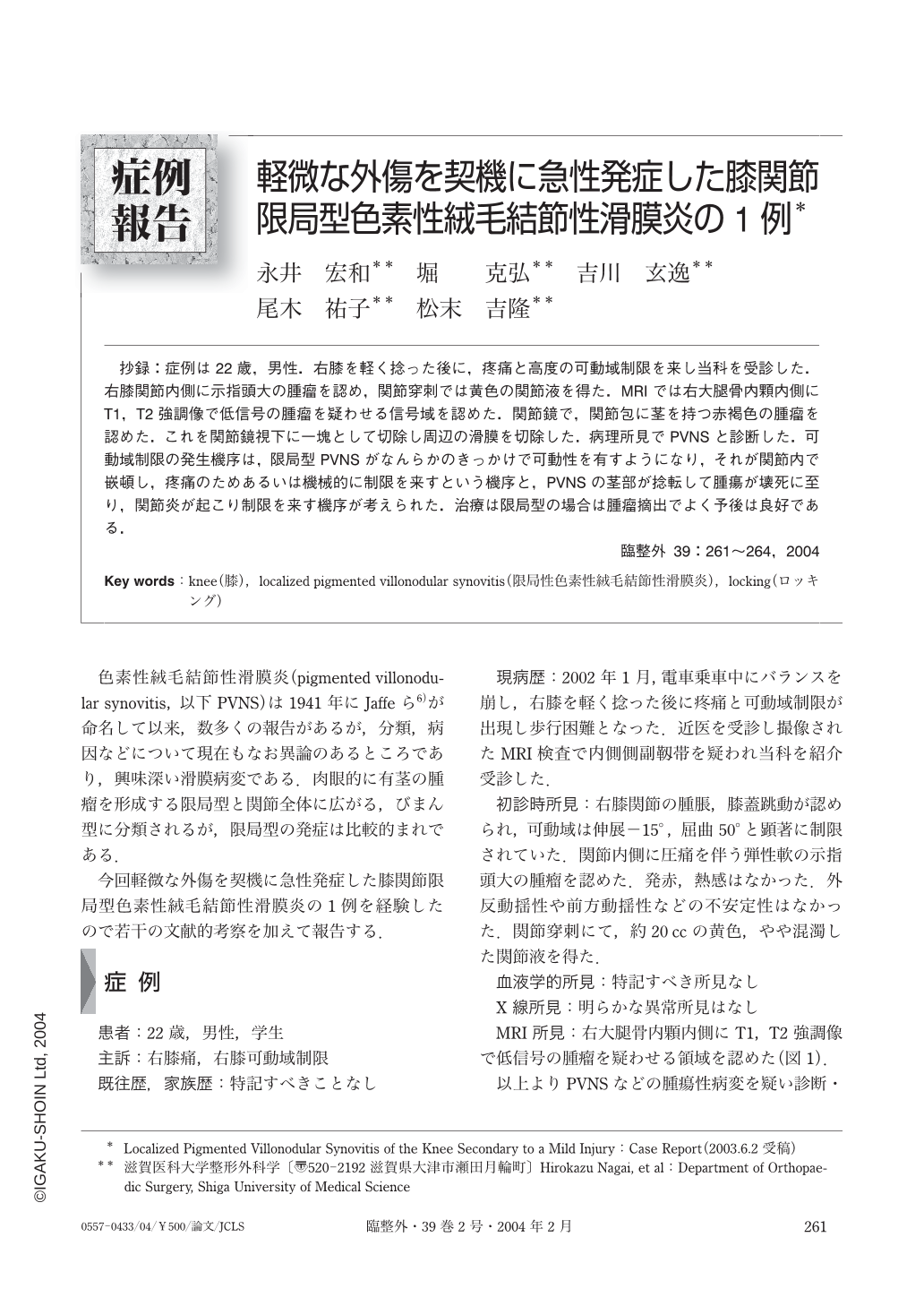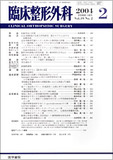Japanese
English
- 有料閲覧
- Abstract 文献概要
- 1ページ目 Look Inside
抄録:症例は22歳,男性.右膝を軽く捻った後に,疼痛と高度の可動域制限を来し当科を受診した.右膝関節内側に示指頭大の腫瘤を認め,関節穿刺では黄色の関節液を得た.MRIでは右大腿骨内顆内側にT1,T2強調像で低信号の腫瘤を疑わせる信号域を認めた.関節鏡で,関節包に茎を持つ赤褐色の腫瘤を認めた.これを関節鏡視下に一塊として切除し周辺の滑膜を切除した.病理所見でPVNSと診断した.可動域制限の発生機序は,限局型PVNSがなんらかのきっかけで可動性を有すようになり,それが関節内で嵌頓し,疼痛のためあるいは機械的に制限を来すという機序と,PVNSの茎部が捻転して腫瘍が壊死に至り,関節炎が起こり制限を来す機序が考えられた.治療は限局型の場合は腫瘤摘出でよく予後は良好である.
A 22-year-old man complained of pain and severe limitation of range of motion (ROM) of his right knee after slightly twisting his knee. On physical examination, palpation revealed a tumor on the medial aspect of the patient's right knee, and yellowish synovial fluid was collected by arthrocentesis. T1-and T2-weighted MRI images showed a mass with low signal intensity on the medial aspect of the medial femoral condyle, and a tumor with a pedicle arising from the articular capsule was observed during an arthroscopic examination. The tumor was resected, and surrounding synovial membrane was removed. Based on the pathological findings the final diagnosis was pigmented villonodular synovitis (PVNS). There are two possible causes of the restricted ROM. The first is mechanical locking by the localized PVNS that may have started to move for some reason. The second is an acute inflammatory reaction with areas of hemorrhage and necrosis that may have been caused by torsion of the tumor resulting in infarction. Localized PVNS can usually be treated by arthroscopic resection and has a favorable prognosis.

Copyright © 2004, Igaku-Shoin Ltd. All rights reserved.


